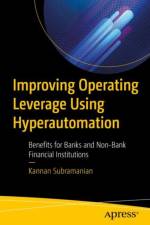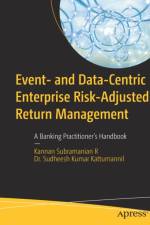av Kannan Subramanian R
745
Take a holistic view of enterprise risk-adjusted return management in banking. This book recommends that a bank transform its siloed operating model into an agile enterprise model. It offers an event-driven, process-based, data-centric approach to help banks plan and implement an enterprise risk-adjusted return model (ERRM), keeping the focus on business events, processes, and a loosely coupled enterprise service architecture.Most banks suffer from a lack of good quality data for risk-adjusted return management. This book provides an enterprise data management methodology that improves data quality by defining and using data ontology and taxonomy. It extends the data narrative with an explanation of the characteristics of risk data, the usage of machine learning, and provides an enterprise knowledge management methodology for risk-return optimization. The book provides numerous examples for process automation, data analytics, event management, knowledge management, and improvements to risk quantification.The book provides guidance on the underlying knowledge areas of banking, enterprise risk management, enterprise architecture, technology, event management, processes, and data science. The first part of the book explains the current state of banking architecture and its limitations. After defining a target model, it explains an approach to determine the "e;gap"e; and the second part of the book guides banks on how to implement the enterprise risk-adjusted return model.What You Will LearnKnow what causes siloed architecture, and its impactImplement an enterprise risk-adjusted return model (ERRM)Choose enterprise architecture and technologyDefine a reference enterprise architectureUnderstand enterprise data management methodologyDefine and use an enterprise data ontology and taxonomyCreate a multi-dimensional enterprise risk data modelUnderstand the relevance of event-driven architecture from business generation and risk management perspectivesImplement advanced analytics and knowledge management capabilitiesWho This Book Is ForThe global banking community, including: senior management of a bank, such as the Chief Risk Officer, Head of Treasury/Corporate Banking/Retail Banking, Chief Data Officer, and Chief Technology Officer. It is also relevant for banking software vendors, banking consultants, auditors, risk management consultants, banking supervisors, and government finance professionals.


